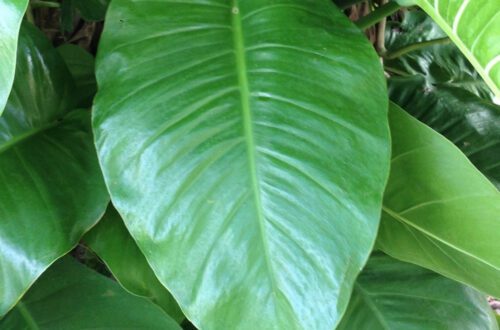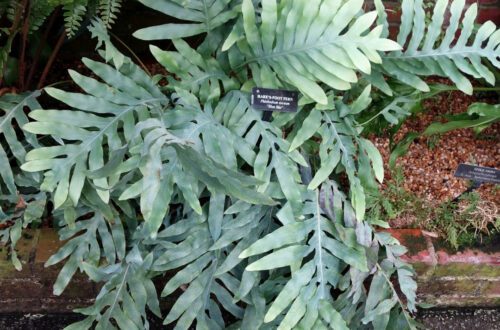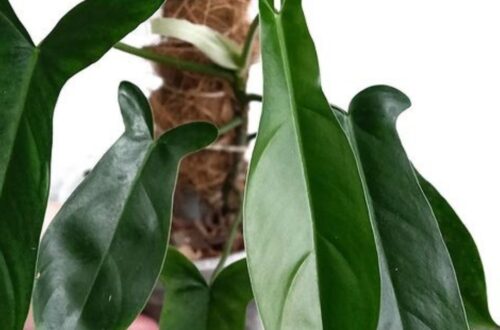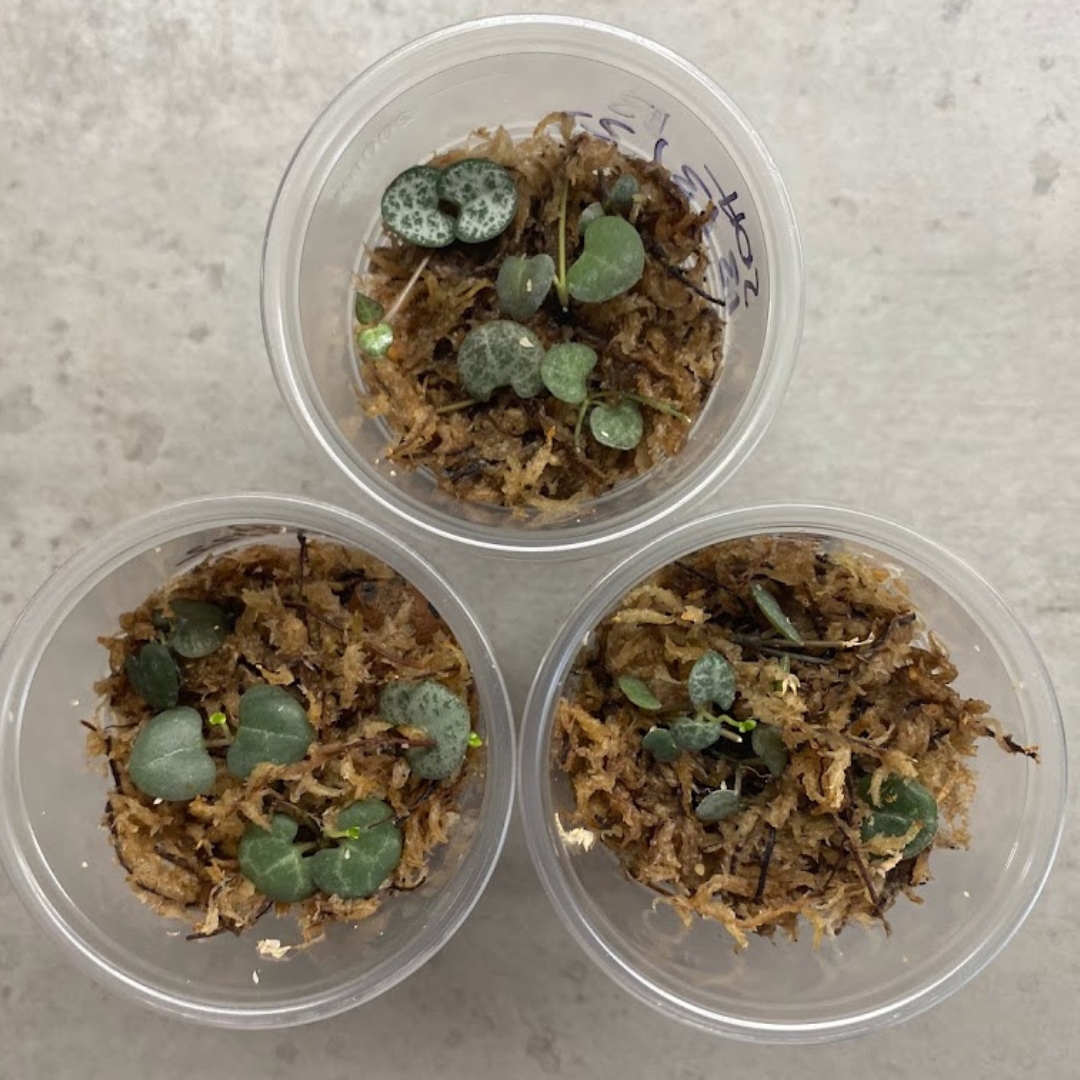
String Of Hearts
String of hearts are a pretty hanging succulent that is easy to care for and propagate, as long as they get plenty of light and are not overwatered. Although slow growing they propagate really easily, I bought one a few years ago and now have 5 or 6 around my house.
String Of Hearts Care Summary
| Light needs: | Bright indirect sunlight |
| Watering needs: | Let it dry out completely between watering. |
| Fertilizer: | Use a general purpose household fertilizer, diluted down by half the normal amount, once a month in the summer months. |
| Soil: | Cactus and succulent compost. |
| Humidity: | They will do well in all household environments and do not need misting. |
| Temperature: | 25-28°C (77-82°F), don’t let them get down to below 10°C (50°F) for too long. |
| Where to buy: | Try our list of the best rare plant shops. |
| Other names: | Ceropegia woodii, Rosary Vine, Sweetheart Vine |
| Common issues: | They are succulents and really prone to overwatering, so only water when completely dry. |
Intro
Welcome to our guide on the String of Hearts plant aka ceropegia woodii. This beautiful little hanging succulent is a firm favorite of mine. We cover both care and propagation here…
See also: String Of Hearts Butterfly Method, How To Propagate String Of Hearts, String Of Pearls Care, Succulent Soil, Succulent Propagation, Propagating Succulents In Water, How To Propagate String Of Hearts.
String of Hearts Care…
Ceropegia Woodii are relatively easy to care for hanging succulents. They like a good amount indirect sunlight, with some direct. The key is not to overwater them.
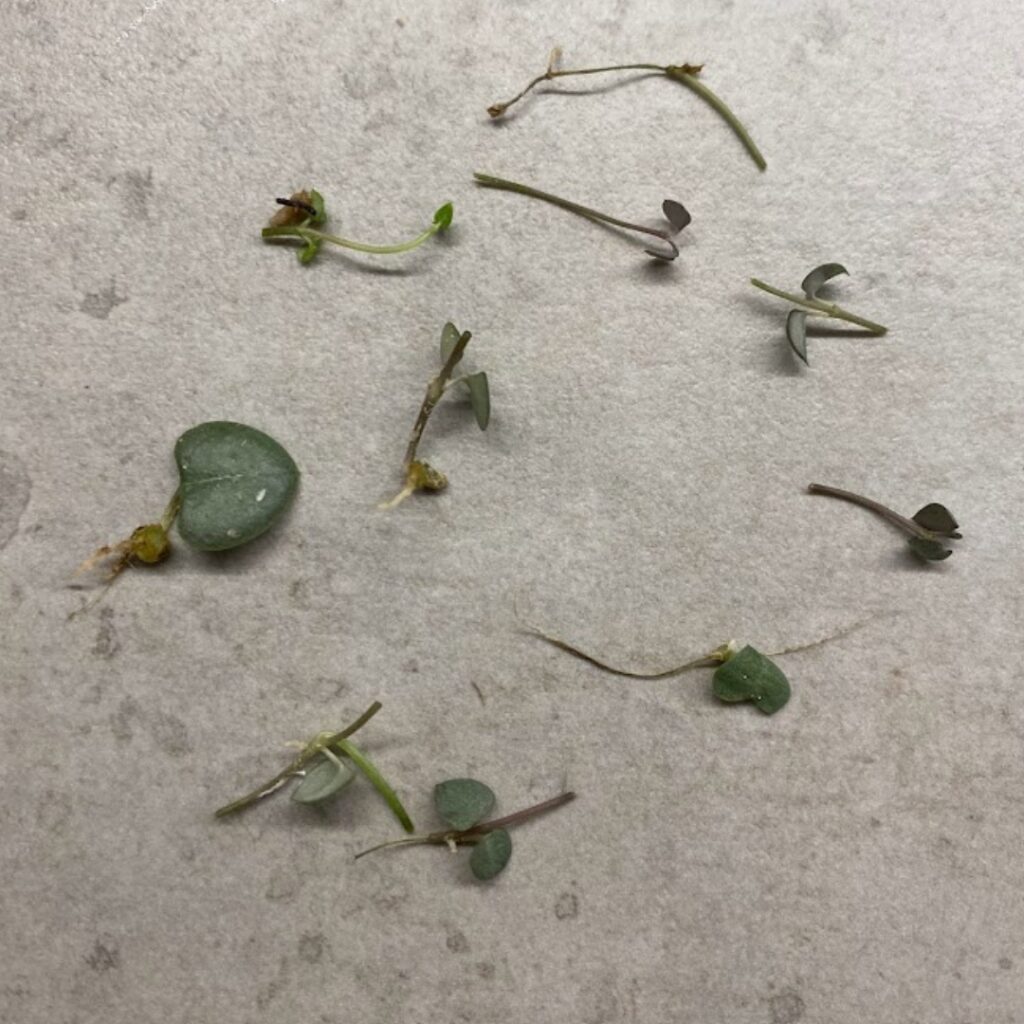
Light Needs
The string of hearts plant is a succulent and likes a lot of light, even a little direct sunlight is ok, but it is best in a bright spot indoors or outdoors that shade it from the midday sun. Indoors they will do well away from the window too. They can grow leggy if not given enough light.
How Often to Water a String Of Hearts
A SOH plant should be allowed to totally dry out before you water it again, they are succulents and will not do well if made to sit for a long time in wet soil. Tip out any excess water afterwards, don’t let it sit in a saucer of water as the soil can suck the water back up and overwater the plant.
Tip: underwatering is better than overwatering, make sure you always check the soil first, especially when temperatures drop at the end of summer and the plant will need less water.
String Of Hearts Fertilizer
You can feed them sparingly in the summer growing months (but not in winter). They will do well without feeding, but grow quicker if you do. Use a general purpose household fertilizer but diluted down by half the normal amount.
Soil Needs
When it comes to soil, SOHs are not fussy, except that they need to drain well. So I use a standard cactus and succulent mix. For more on which cactus and succulent compost to buy or how to make you own, see our guide: Succulent Soil.
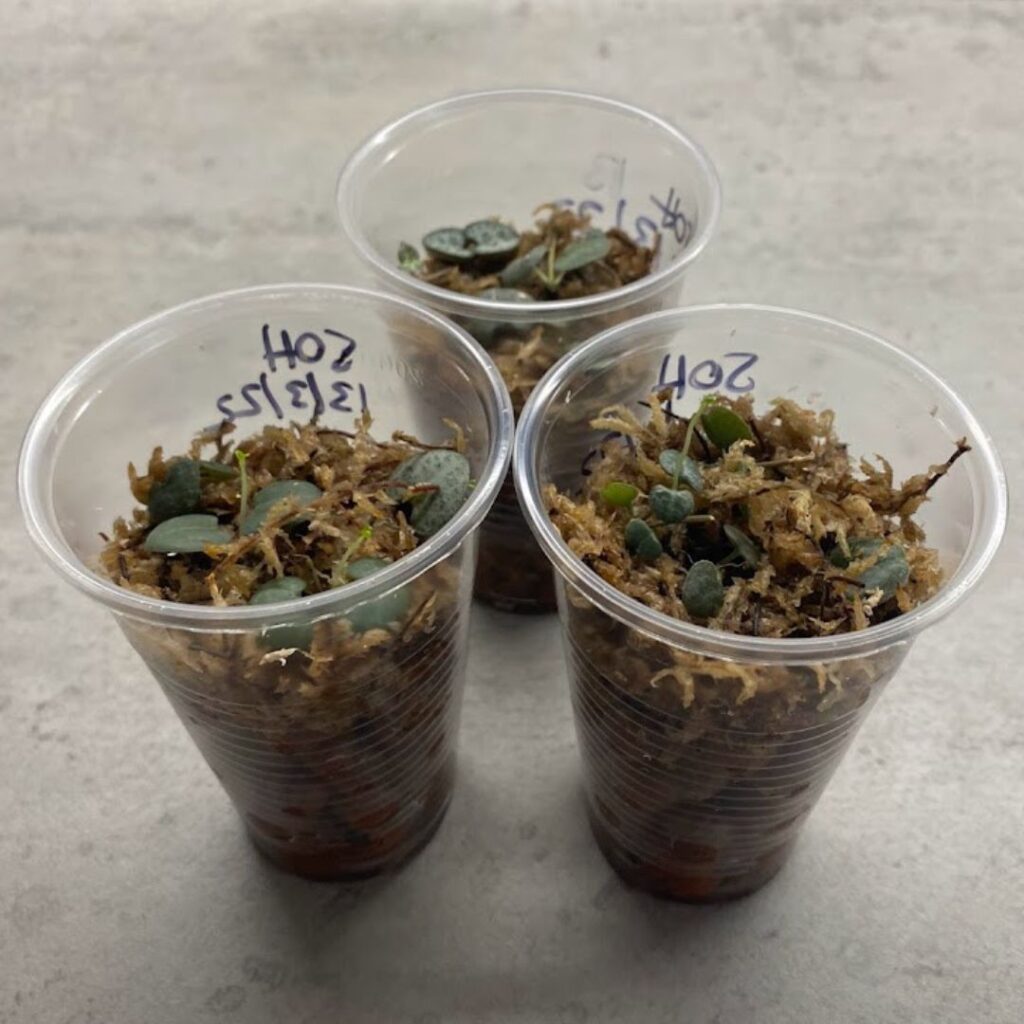
When To Repot A String Of Hearts
You do not have to repot a SOH plant regularly they don’t mind their roots being a bit crowded. You can repot it up a size every one or two years in spring.
Ceropegia Woodii Humidity
SOHs do fine in normal household humidity and don’t require any special attention in this regard. They do ok in low to fairy high humidity ranges.
Temperature Needs
String of Hearts will do best towards the warmer end of normal household temperatures. Keep them by your warmest / brightest window, but not in 100% direct sunlight. Aim for 15-27°C (59-80°F) during the day. Try to keep them above 10°C(50°F) as a minimum temperature at night.
String of Hearts Propagation…
The best way to propagate SOHs is with sphagnum moss as the moisture encourages quick root and leaf growth from the nodes. Follow these steps:
- Step 1: use a clean sharp knife or scissors to cut off one of the ‘strings’.
- Step 2: cut the string into smaller cuttings – one for each leaf node (with a leaf on each).
- Step 3: get a small container like a tupperware and put a bed of wet, soaked sphagnum moss in it
- Step 4: put the cuttings on the wet moss.
- Step 5: keep the container open and in a warm place with plenty of indirect sunlight.
- Step 6: spray the moss occasionally to keep it damp (but not soaking wet).
- Step 7: The cuttings should put down roots and grow leaves. You can pot it up to soil in a couple of months once the roots are established.
Here is one of our propagations, firstly the cuttings:
…and finally the cuttings in moss:
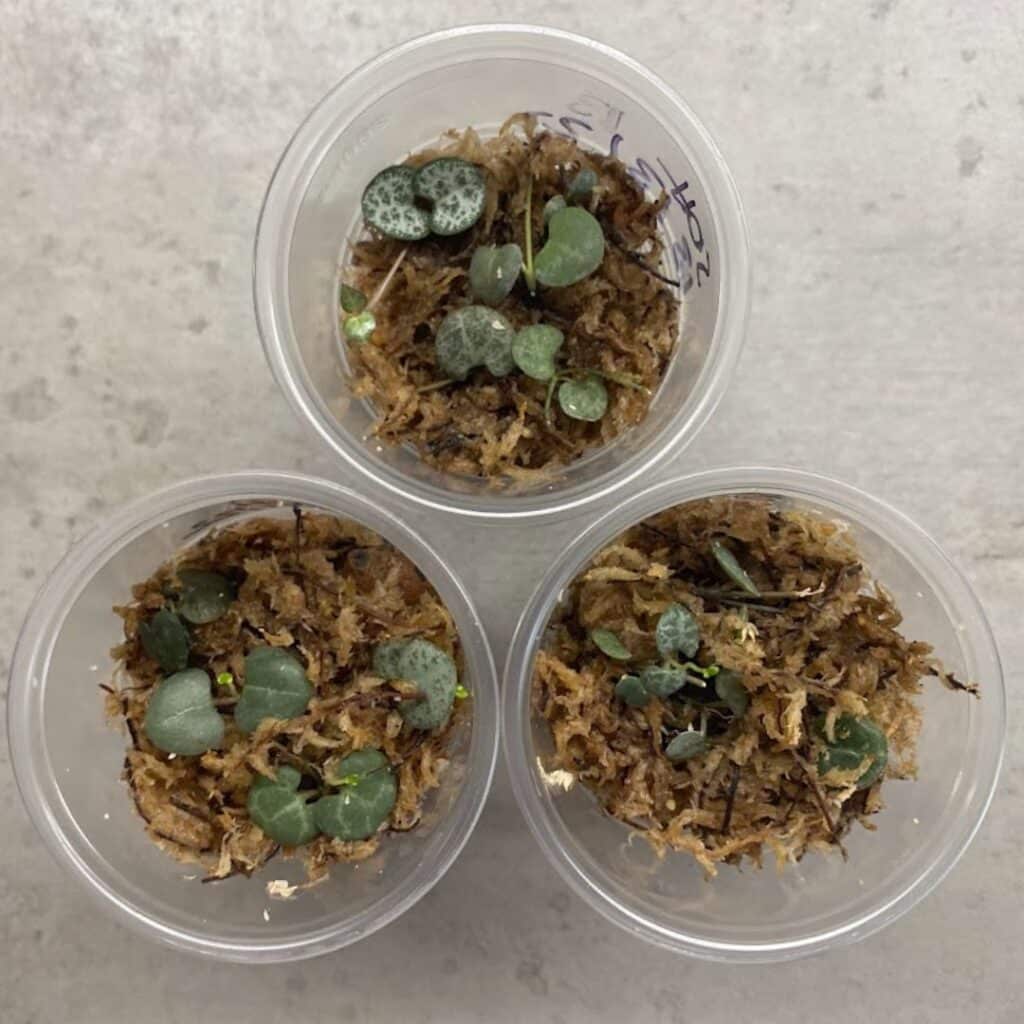
You can also propagate SOHs by water propagation in a similar method to the above but putting longer cuttings of the stems in water. I have found more cuttings rot using this method though.
Some people also get a long ‘string’ of the hearts and curl it around on top of a pot of soil and water it until they root. You can do this to your current plant to make it more bushy.
Older plants also make tubers which you can bury so that they root to make a new plant. You can see these rounds growths on the ‘strings of older plants’.
See also: String Of Hearts Butterfly Method, How To Propagate String Of Hearts, Succulent Propagation (with pictures).
USDA Zone
They can grow outdoors in zones 9-12.
String Of Hearts Varieties
There are a few string of hearts varieties including:
Normal String of Hearts
The standard variety, known for it’s dark green leaves with light green speckles.
String of Spades
This is a much lighter green color with even light green speckling. Sometimes called String of Hearts Durban.
String of Hearts Silver Glory
The string of hearts silver glory have big all silvery-green coloring on it’s leaves (as opposed to speckling like on the regular SOH). The leaves have a thin dark green border to them.
Variegated String Of Hearts (pink or white)
They have white or pink variegated borders to the leaves.
Ceropegia Woodii FAQs and Common Issues
We run down a few commonly asked questions on String of Hearts…
SOHs can take two tot five years to grow to maturity. They grow relatively quickly for a succulent.
They can become leggy and straggly, but you can cut off the untidy strings and propagate them back into the original plant to make it both tidier and bushier. It is a good idea to do a month before repotting and then you’ll have a few more propagations to plant back in with the main plant when repotting.
As with almost all houseplants they are prone to overwatering – remember these are from the succulent family, so let your SOH dry out fully before watering. If it has been badly affected, take some healthy cuttings from it and propagate them as a back up. The best way is the sphagnum moss method mentioned above.
You can easily tell the difference as the strong of hearts has heart shaped leaves while the string of turtles has rounded leaves.
String of hearts can live in water, for best chance of success you need to root a cutting in water and then let it live there indefinitely. Transitioning a soil plant to water will probably not work.
They are not toxic to cats.
They can bloom in the warmer growing months or spring and summer. They produce small tubular pink and black flowers.
They are found in the wild in South Africa.
SOHs take between 2 and 4 weeks to root, then they should start producing more leaves too. Leave them to develop roots for a few weeks longer before moving them to a pot.
You want to cut them below the node. They cutting will root from the node so make sure you include one or more. For more on this see our guides: String Of Hearts Butterfly Method, How To Propagate String Of Hearts.
They flower with small tubes with crown-like flowers on them. They do not always flower indoors.
When you repot them it is a good idea to twirl the long stems up and put them on top of the plant, like putting hair up in a bun. Or they can be tricky to repot with the long stems getting in the way.
String of hearts is classified as a succulent.
They are not toxic to dogs.
They are relatively easy to care for as long as they get enough light.
They angle easily but can be untangled easily, it is best to do it on a table so the stems are not hanging, and then untangle them slowly.
They grow small when the plant is root bound or in low light areas. Repot and give it plenty of light.
They can tun yellow from over or underwatering, check the soil dryness and change your watering habits accordingly.
It can burn if given prolonged direct summer sun, but some early or later direct sun is good for the plant.
The most common reason for dropping leaves is over watering. It can also be underwatering. If the soil is wet, let it dry out before watering again. If it is dry give it a watering.
String of hearts get leggy from lack of light, move it closer to a window.
String Of Hearts Variegated
The variegated ceropegia woodii is a beautiful version of this plant. It needs the same conditions as it’s non variegated cousin. They are fairly common now as propagation is quick and easy you can find them on Etsy as well as most other online market places.
Other Names
Ceropegia woodii, Rosary Vine, Sweetheart Vine

Additional Resources
Buy: we recommend a digital thermometer hygrometer (amazon affiliate link) to measure humidity.
Links:
Other Articles You Might Like
See our Water Propagation article here.
Follow us on Instagram for more pictures and updates.


